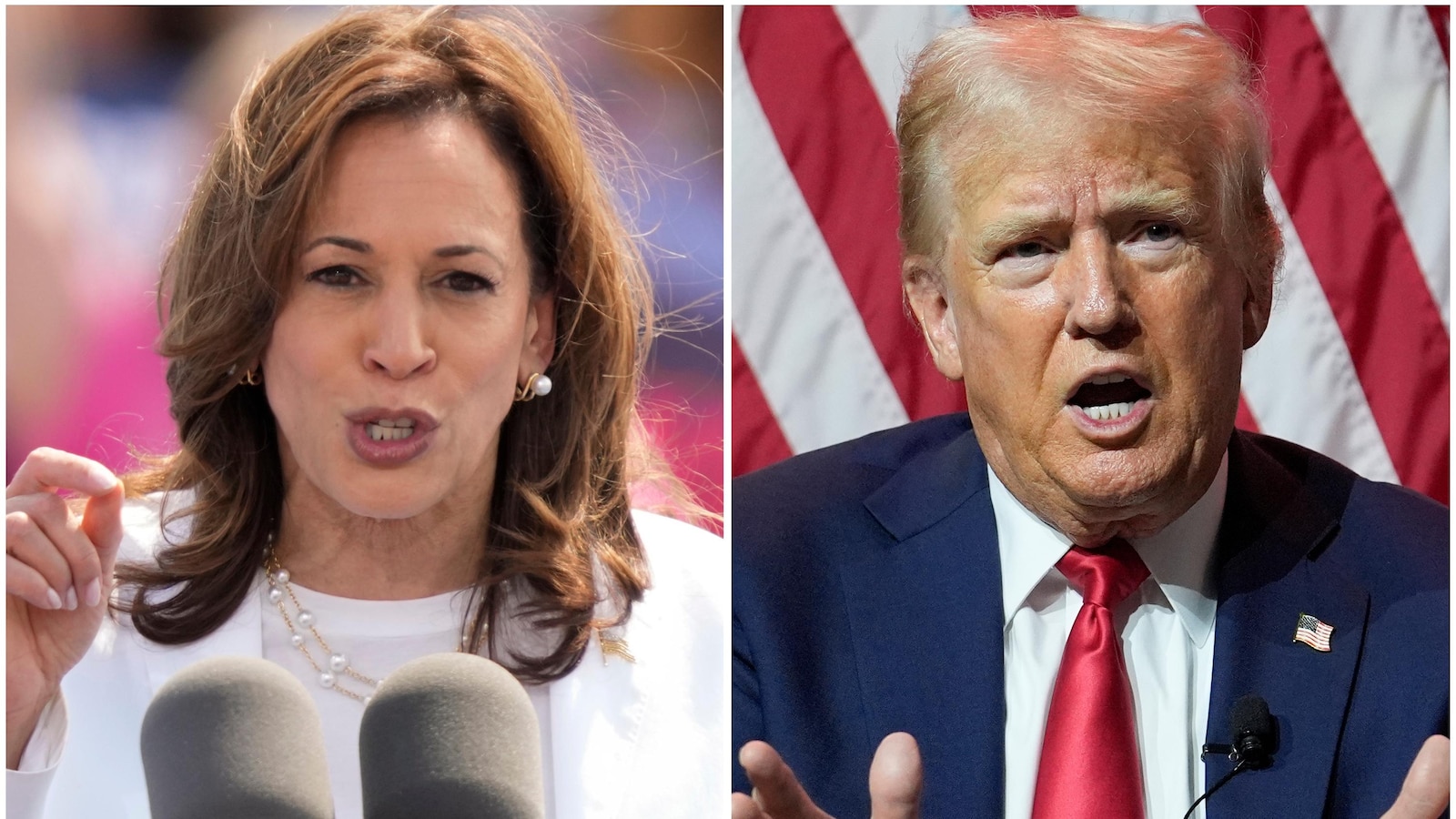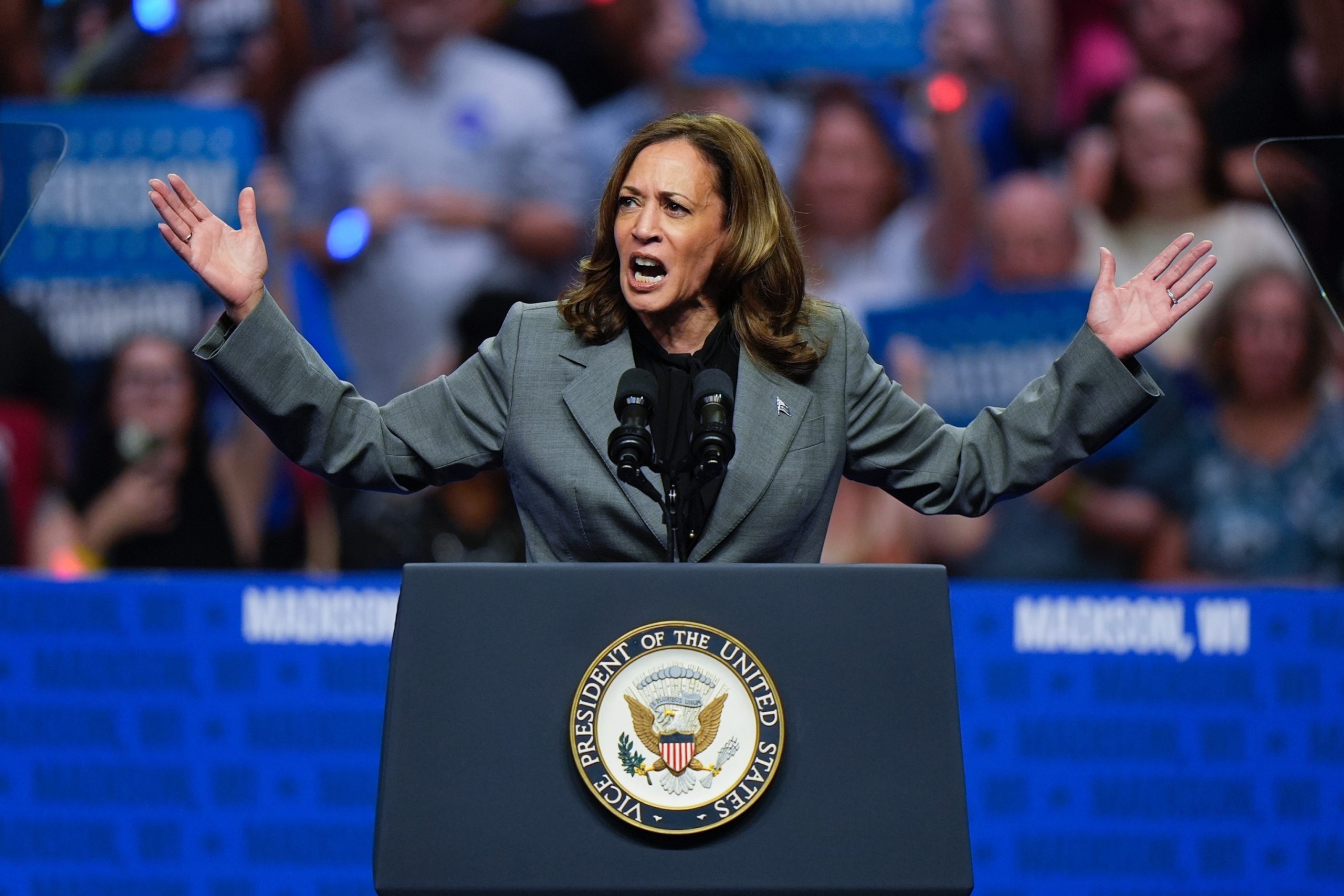
WASHINGTON — With the 2024 election looming, the first since the mass popularization of generative artificial intelligence, experts feared the worst: social media flooded with AI-generated deepfakes that were so realistic, baffled voters wouldn’t know what to believe.
So far, that hasn’t happened. Instead, what voters are seeing is far more absurd: A video of former President Donald Trump riding a cat while wielding an assault rifle. A mustachioed Vice President Kamala Harris dressed in communist attire. Trump and Harris sharing a passionate embrace.
AI is playing a major role in the presidential campaign, even if the greatest fears about how it could threaten the U.S. presidential election haven’t materialized yet. Fake AI-generated images regularly ricochet around the web, but many of them are so cartoonish and absurd that even the most naïve viewer couldn’t take them seriously.
Still, even these memes can be problematic. Eye-catching AI-generated photos and videos, some striving to be funny, have become useful tools for spreading false, sometimes racist messages with a clear political bent — and candidates and their supporters are among those sharing them on social media.
For example, Trump and many of his allies not only repeatedly promoted the unfounded conspiracy theory that Haitian migrants are stealing and eating cats and dogs in Springfield, Ohio, they also spread related AI-generated memes. One shared by Trump’s Truth Social account showed him on a luxury jet, surrounded by cats and white ducks. Another showed a group of kittens holding a sign that read, “DON’T LET THEM EAT US, Vote for Trump!”
Francesca Tripodi, an expert in online propaganda, said such AI-made images are new, viral vehicles to carry age-old anti-immigration narratives.
“The memes that are amplifying this claim are anything but humorous. When you have elected officials who are utilizing this imagery as a way of perpetuating racism and xenophobia, that’s a huge problem,” said Tripodi, a sociologist at the University of North Carolina at Chapel Hill.
Republicans defend the images as lighthearted jokes — and byproducts of Trump’s personality.
“There is a culture of personality surrounding Donald Trump that encourages that sort of over-the-top communication style that turns things into comical memes,” said Caleb Smith, a Republican strategist. “The intent is to entertain, not to deceive. That is what it should be.”
Trump and his supporters aren’t the only ones creating AI memes, but they appear to be using AI image generators more than their Democratic counterparts. Some left-leaning users have posted AI images making fun of billionaire Elon Musk, the owner of X and an outspoken supporter of Trump’s campaign. Democrats also posted AI-generated images of Trump in handcuffs and being chased by police when he was in court in Manhattan last year.
But Kamala Harris’ campaign has not leaned into amplifying AI-generated content, sticking instead to TikTok trends and other memes that don’t require AI models to create.
“Currently, the only authorized campaign use of generative AI is for productivity tools, such as data analysis and industry-standard coding assistance,” said Harris campaign spokesperson Mia Ehrenberg.
Trump campaign spokesman Steven Cheung did not respond to specific questions from The Associated Press but said its strategy had not changed since May, when he provided an emailed statement saying the campaign did not “engage or utilize” tools supplied by any AI company.
Using fake, entertaining, often preposterous images to score political points is hardly new. But unlike cobbled-together Photoshop images or political cartoons, AI-generated images pack a stronger punch with their hyperrealism and can draw new attention to a political message.
While some of the images related to pets in Springfield were cartoonish and silly, many felt they perpetuated a damaging conspiracy theory about a community that has since received bomb threats prompting evacuations of schools and government buildings.
“Memes that are obviously parody are one thing. It’s another where it’s obviously intended to deceive,” said Rep. Adam Schiff, a California Democrat and vocal Trump critic. “And we already see the Trump campaign really blurring the line.”
The speed and accessibility of generative AI tools make it easy to create outlandish political content that can drive clicks and likes. With AI image generators accessible to anyone with an internet connection, they are a cheap and convenient way for campaigns to respond to online trends and hammer home a message.
“Campaigns have had to deal with disinformation and misinformation for a very long time. … It’s not a new problem. But obviously what AI allows is for this stuff to do done more rapidly, perhaps more convincingly, and in a more targeted environment,” said Teddy Goff, the digital director of Barack Obama’s 2012 reelection campaign.
Paul Ingrassia, a New York-based political commentator and lawyer, said he spun up a viral image of Trump emerging from a lion’s den in seconds by prompting Grok, then dropped it into his newsletter and sent it to Trump campaign staffers. Trump’s Truth Social account posted Ingrassia’s newsletter, including the image, that day.
“I got a message from my point of contact with the president and they said: ‘The president loved the image, how did you make it? Who created it?’ And I said: ‘Oh, I did. I made that for the article,’” Ingrassia said. “And he said, ‘Keep up the great work, he loves it.’”
The use of AI for political satire and propaganda isn’t limited to the U.S. and has been observed in elections from Indonesia to the Netherlands.
More sinister deepfakes also have sought to influence races around the world. In Slovakia last year, AI audio clips impersonated the liberal party chief talking about rigging the vote days before parliamentary elections. In New Hampshire’s primary in January, audio deepfakes of President Joe Biden were sent in robocalls to Democratic voters, urging them not to vote. The incident was quickly publicized and resulted in criminal charges.
Trump’s embrace of AI-generated images counters some of his past commentary. In an interview on Fox Business this year, Trump called artificial intelligence “very dangerous” and “so scary” because “there’s no real solution” to the issues created by the advancing technology.
And some Republicans have fretted about how Trump and the GOP are using AI to create political memes.
“I don’t engage in memes. I never have. I never will,” said Rep. Brian Fitzpatrick, a Pennsylvania Republican in a competitive district outside Philadelphia. “I just don’t believe in it.”
___
Swenson reported from New York.
___
This story is part of an Associated Press series, “The AI Campaign,” exploring the influence of artificial intelligence in the 2024 election cycle.
___
The Associated Press receives support from several private foundations to enhance its explanatory coverage of elections and democracy. See more about AP’s democracy initiative here. The AP is solely responsible for all content.
The Associated Press receives financial assistance from the Omidyar Network to support coverage of artificial intelligence and its impact on society. AP is solely responsible for all content. Find AP’s standards for working with philanthropies, a list of supporters and funded coverage areas at AP.org.
As the 2024 presidential race approaches, the role of artificial intelligence (AI) in influencing the outcome is becoming increasingly significant. While many may assume that AI is simply a tool for analyzing data and predicting trends, experts are now suggesting that its impact on the political landscape may be more profound than previously thought.
One surprising perspective from experts is that AI has the potential to not only predict election outcomes, but also to actively shape them. By analyzing vast amounts of data on voter preferences, social media trends, and other factors, AI algorithms can identify key issues that resonate with voters and help political campaigns tailor their messaging to better connect with the electorate.
Furthermore, AI can be used to target specific demographic groups with personalized messages, allowing candidates to reach voters in a more direct and effective way. This level of micro-targeting has the potential to sway undecided voters and mobilize supporters in ways that were not possible before the advent of AI technology.
In addition to its role in campaign strategy, AI is also being used to combat misinformation and fake news, which have become major issues in recent elections. By analyzing online content and identifying false information, AI algorithms can help ensure that voters are receiving accurate and reliable information about candidates and their policies.
However, experts caution that the use of AI in politics also raises ethical concerns, particularly around issues of privacy and transparency. As AI algorithms become more sophisticated, there is a risk that they could be used to manipulate public opinion or unfairly influence election outcomes.
Despite these challenges, many experts believe that AI has the potential to revolutionize the way political campaigns are run and elections are conducted. By harnessing the power of AI to analyze data, target voters, and combat misinformation, candidates can run more efficient and effective campaigns that better reflect the will of the electorate.
In conclusion, the role of AI in influencing the 2024 presidential race is likely to be significant and far-reaching. While there are risks and challenges associated with its use, experts agree that AI has the potential to reshape the political landscape in ways that we have yet to fully understand. It will be interesting to see how candidates and campaigns harness the power of AI in the coming years and what impact it will have on the outcome of the 2024 presidential race.


